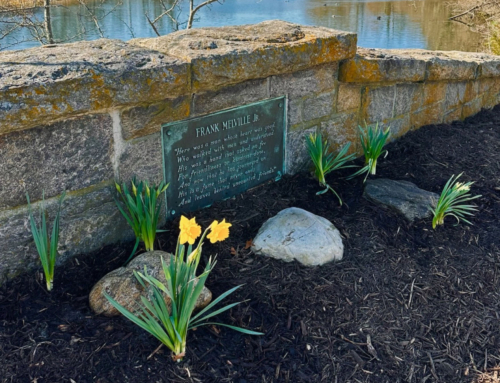Article published by Rita J Egin
April 2, 2021
Frank Melville Memorial Park is about to add a cutting-edge process to help protect local waters.
In a recent press release, trustees of the Frank Melville Memorial Park Foundation announced that the Long Island Sound Futures Fund awarded the park a grant to install a wastewater biofilter at the Setauket park. The award administered through the National Fish and Wildlife Foundation totals nearly $30,000.
The biofilter will replace a cesspool at a residence on the park’s property.
“We are extremely grateful to the Long Island Sound Futures Fund and the National Fish and Wildlife Foundation,” park trustee Robert Reuter said in the press release. “Not only will the project reduce wastewater pollution to the Setauket Mill Pond but it will offer a tremendous educational example for the Setauket community and beyond about residential wastewater problems on Long Island and what can be done about it.”
In the press release, park trustees also thanked Suffolk County Legislator Kara Hahn (D-Setauket) and state Assemblyman Steve Englebright (D-Setauket) for their support “in helping the project obtain the grant award.”
The wastewater treatment technology used at the park will be a nitrogen-removing biofilter that was recommended by researchers at the New York State Center for Clean Water Technology at Stony Brook University, according to the press release.
Members of the center unveiled their nitrogen-reducing biofilter at a Shirley home in 2018. The wastewater biofilters remove nitrogen and other harmful contaminants from residential waste which is first pumped into a septic tank. The effluent is then moved into a separate system that trickles down by gravity, first going through a sand layer where bacteria turns the nitrogen into nitrite and nitrate. The waste then goes through another layer of sand and wood chips designed to turn the nitrite/nitrate into nitrogen gas that will go into the atmosphere, instead of the ground or surrounding water.
In 2015 Suffolk County Executive Steve Bellone (D) called nitrogen pollution the county’s “environmental public enemy number one.” Since then, the county has worked with local scientists and engineers to craft technology that could replace Long Island’s old cesspool and septic tanks.
The plans for the park system were designed by Tom O’Dwyer, from HomePort Engineering, and the installation will be awarded to an installer by a competitive bid.
O’Dwyer and his wife, Carolyn, installed a low-nitrogen septic system on their Strong’s Neck property in the spring of 2019 after learning about the treatment process. Unlike a cesspool where bacteria and nitrogen can seep out, O’Dwyer said in a 2019 interview that the advanced process removes more nitrogen than a cesspool. Excessive nitrogen can affect the oxygen level in water where it is below the necessary levels to support marine life.
O’Dwyer recently said in an email he has been pleased with the results of his system, and in the last two years, he has designed a handful of the wastewater systems in environmentally- sensitive areas in the Three Village community.
“It’s an exciting project, and I am proud to be part of it,” he said.





